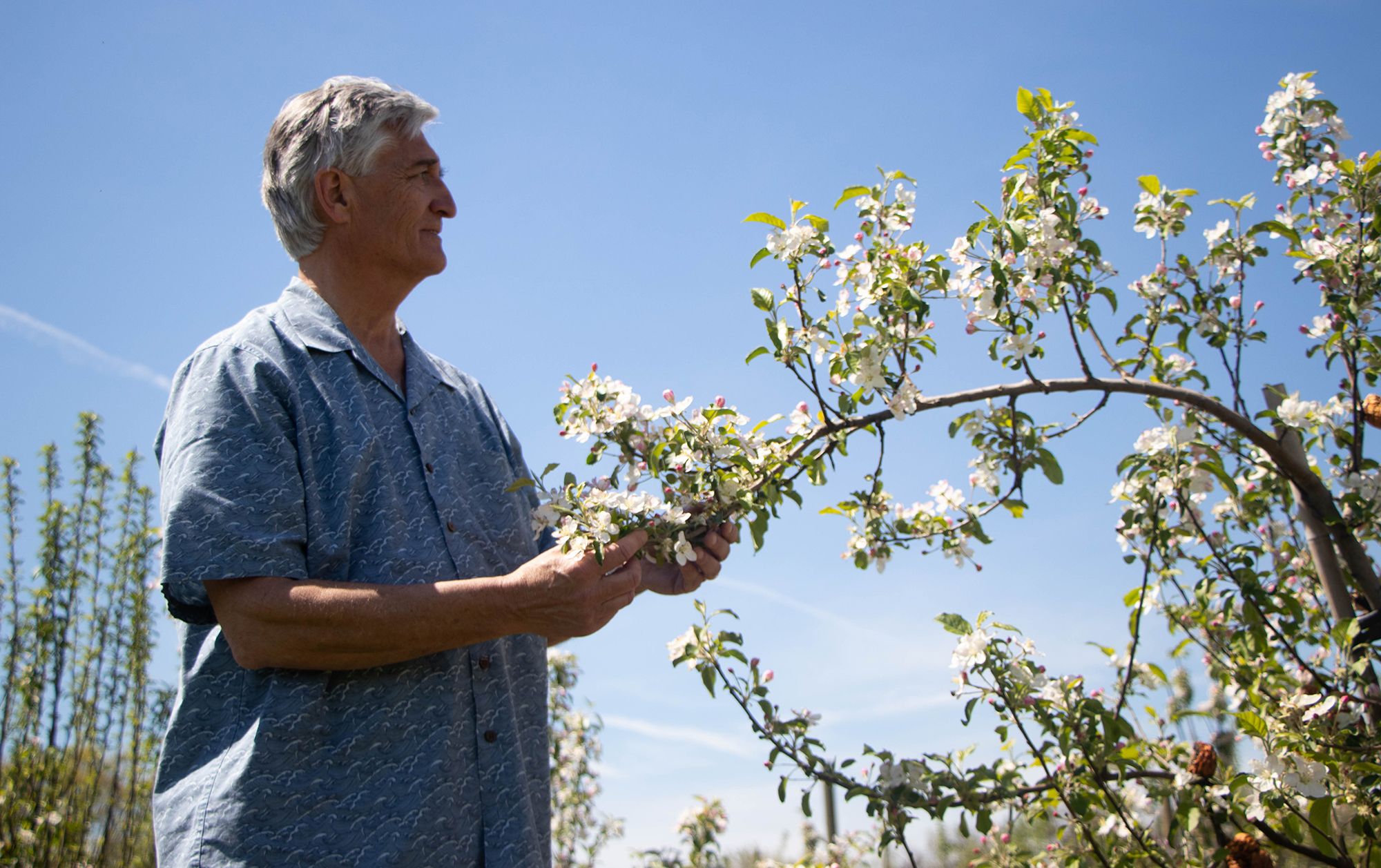KEEDYSVILLE, Md. – On an early spring day a few miles away from the Antietam National Battlefield, a group of busy honeybees land on the blossoms of a small apple tree.
That tree, a 20-year-old Antietam Blush, is the byproduct of nearly three decades of work by the University of Maryland — and of course, those buzzing insects.
Christopher Walsh, a professor in the plant science and landscape architecture department at this university, set out to breed an apple tree that would thrive in the mid-Atlantic climate in 1991. He planted just over 100 trees — then relied on the bees to do the rest.
“I didn’t go out and hand pollinate, I let Mother Nature do it,” Walsh said.
[Read more: UMD researchers may have figured out a way to develop electricity from wood]
Twenty-eight years and a patent later, Walsh’s goal bore fruit: the apple he co-invented with a student from this university now grows in about ten different orchards.
But it all started at the Western Maryland Research and Education Center.
That’s where Walsh planted about 100 Gala trees around two McIntosh Wijick trees to start the breeding process.
On top of being able to withstand the hot and rainy mid-Atlantic summers, he wanted the trees to be disease-resistant and have a late October harvest, which Walsh said would encourage more people to flock to pick-your-own orchards.
Then, Walsh said he used seedlings from those parent trees and combined them with heat tolerant commercial varieties like Fuji, Cripps Pink and York.
In 2007, he enlisted the help of Julia Harshman, who had recently transferred to this university from Rutgers University. She was a sophomore at the time, and Walsh’s advisee, when she said he approached her and asked if she wanted to be part of a research project.
“I said sure, not really knowing what I was getting myself into,” said Harshman, who still works as a plant breeder today.
[Read more: UMD awards record amount of funding to support campus environmental projects]
The project had a bit of a rocky start, according to Harshman.
“So we get up to the orchard for the very first day, he’s showing me everything — I won’t say chaos, but something close to that,” she recalled. “Nothing had been labeled, we didn’t have counts on anything, almost no data had been collected.”
Walsh said the agricultural team started with about 2,000 seeds, but ended up having to remove many of the newly planted trees due to issues with disease and fruit quality.
After a few years, one tree stood apart from the rest for its size, health and the taste of the apples it produced: Tree #101.
“101 was unique, in my experience, in that it stood out from very early on, that that was going to be the winner,” Harshman said.
Harshman named the new breed the Antietam Blush, both for the color of the fruit it bore and the orchard’s proximity to the historic Civil War battlefield, which saw the bloodiest day in U.S. history, with more than 22,000 casualties.
“It’s a Maryland name, but also to honor the many, many, many Americans who died there,” Walsh said.
Because the tree does not grow very tall, Walsh said, its limbs droop as the fruit grows larger, making the apples easier to pick without a ladder. Because more sunlight can reach the apple, the result is a better-tasting fruit, he said.
Walsh said each tree can produce about three to five bushels of fruit. At 40 pounds a bushel, each tree can product between 120 and 200 pounds of fruit. Growers look to get about 1,000 bushels to the acre, Walsh said.
For much of the tree’s history, it resided on just one orchard. But six years ago, fear that a disease outbreak would kill all specimen in one fell-swoop prompted another faculty member in Walsh’s department to look into dispersing the trees.
The faculty member, Bryan Butler, approached the owner of Catoctin Mountain Orchard in Thurmont, Maryland — Bob Black — who agreed to bring nine of the trees to his property.
The trees have been doing very well in Black’s orchard. For the last couple of years, he said he’s taken the apples to give away at the Mid-Atlantic Fruit and Vegetable Convention in Hershey, Pennsylvania, and the response has been overwhelming.
“We were getting such positive results, it was unbelievable,” he said. “We’ve given away six to eight bushels a year, people coming back for seconds and thirds.”
Although the apples are still a few years away from commercial availability, Black said he’s happy to be part of history.
“It’s an apple from Maryland. And that kind of means something to a lot of people — that this was developed for here and for Maryland,” he said.
Due to an editing error, a previous version of this story’s photo caption misstated Christopher Walsh’s surname. The caption has been updated.



